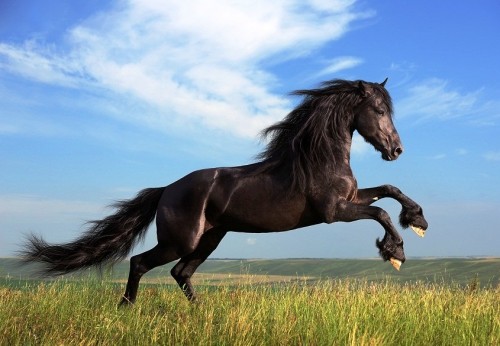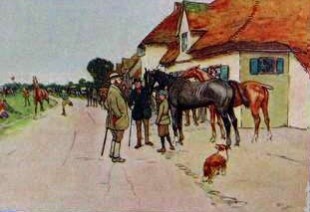“We call them dumb animals, and so they are, for they cannot tell us how they feel, but they do not suffer less because they have no words”.
We have all heard of this classic novel, but how familiar are you with the book’s impact on animal welfare?
A century after first publication, in 1977, it was rated the favourite book read by ten year olds. Although its popularity is waning, its classic status remains unshaken. The strength of the novel lies in the sincerity and passion with which Anna wrote it, with its good hearted, hard-working hero who makes it against all odds, and incidentally, is a horse..
Today critics consider Black Beauty to be overly sentimental and slightly patronising, an accusation often levelled at literature of the Victorian era. However in the 135 years since its publication, the book has sold over 30 million copies. It has earned a place in the hearts of animal lovers everywhere. Anna Sewell was a woman who demonstrated that there was strength in kindness and compassion, and that the written word could change the world.
 Anna Sewell didn’t start off her life intending to be a novelist. Indeed, she didn’t begin writing Black Beauty until she was 51 years old, motivated by the need to encourage people to treat each other, as well as horses humanely, and it took her six years to write it. She is said not to have written the book for children as such, but for horses. Narrated by the horse in the first person, the novel moves from his carefree days as a colt on an English farm with his mother, to the harsh world of pulling cabs in London, and eventually a peaceful retirement. The book offers a remarkable insight into the Victorian taxi cab industry and pre-mechanised London. Each short chapter recounts an incident in Black Beauty’s life containing a lesson or moral typically related to the kindness, sympathy, and understanding treatment of horses, with Sewell’s detailed observations and extensive descriptions of horse behaviour.
Anna Sewell didn’t start off her life intending to be a novelist. Indeed, she didn’t begin writing Black Beauty until she was 51 years old, motivated by the need to encourage people to treat each other, as well as horses humanely, and it took her six years to write it. She is said not to have written the book for children as such, but for horses. Narrated by the horse in the first person, the novel moves from his carefree days as a colt on an English farm with his mother, to the harsh world of pulling cabs in London, and eventually a peaceful retirement. The book offers a remarkable insight into the Victorian taxi cab industry and pre-mechanised London. Each short chapter recounts an incident in Black Beauty’s life containing a lesson or moral typically related to the kindness, sympathy, and understanding treatment of horses, with Sewell’s detailed observations and extensive descriptions of horse behaviour.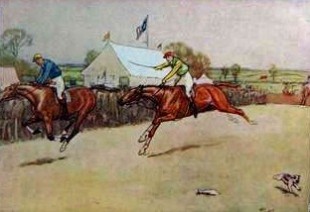
The book describes conditions among London horse-drawn taxicab drivers, including the financial hardship caused by high licence fees and low, legally fixed fares. A footnote in some editions says that soon after the book was published, the difference between 6-day taxicab licences (not allowed to trade on Sundays) and 7-day taxicab licences (allowed to trade on Sundays), was abolished and the taxicab licence fee was much reduced.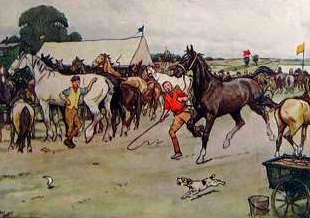
Anna observed how cruelly horses were often treated. Beaten by their owners, made to pull over-loaded wagons and carriages, many died of exhaustion where they stood in their harness. There were also some extremely cruel fashions of the time, including the docking of the horse’s tail to “improve the appearance” which not only caused pain but prevented them swatting away annoying flies, causing them to be stung and bitten. There was also the bearing rein which was used to pull the horse’s head in towards the chest in order to give a pronounced arch to the neck. This was considered a very desirable look, much sought after in carriage horses, but it meant that the animal was unable to breathe properly and would later develop respiratory problems. Not only this, the method meant they were unable to look from side to side and found it difficult to pull their loads properly.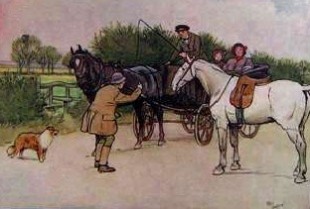
Anna and her mother were appalled at the sight of any mistreatment and often remonstrated with the horse’s owner. However, their efforts usually resulted in the women being threatened with a beating themselves! Their Quaker beliefs harmonised with opposition to tormenting animals for pleasure or hunting for sport. After reading an essay on animals by Horace Bushnell, Anna declared that she wished “to induce kindness, sympathy, and an understanding treatment of horses”.
Although the Royal Society for the Prevention of Cruelty to Animals had its origins fifty years earlier, it was the publication of Black Beauty and the reaction of the British public that really gave it impetus.
“…. there is no religion without love, and people may talk as much as they like about their religion, but if it does not teach them to be good and kind to man and beast, it is all a sham….” (Black Beauty, Chapter 13, last paragraph).
On April 25 1878, just three months after Black Beauty was published, Anna Sewell died from hepatitis. Ironically at her funeral her mother noticed that all the horses in the funeral procession were wearing bearing reins, and had to insist that they be removed.
“A classic is something the idea of which seems so simple and so perfect that to imagine a world where it no longer exists is impossible” Adrienne E. Gavin
Thanks to:
